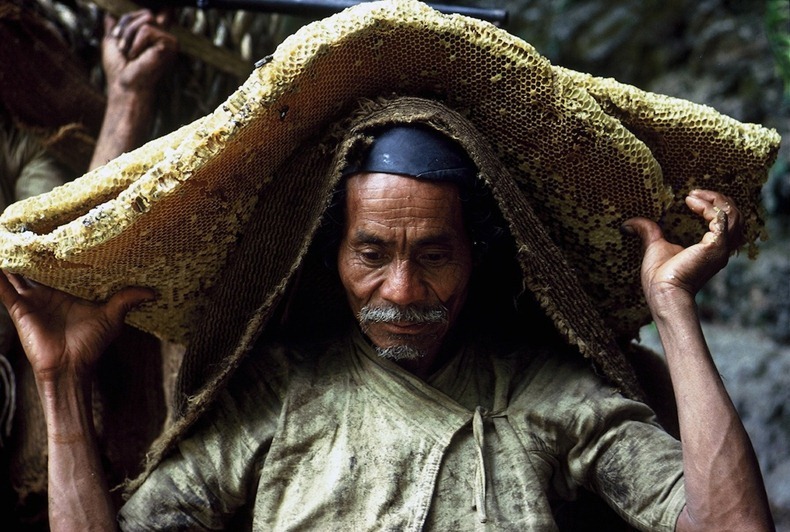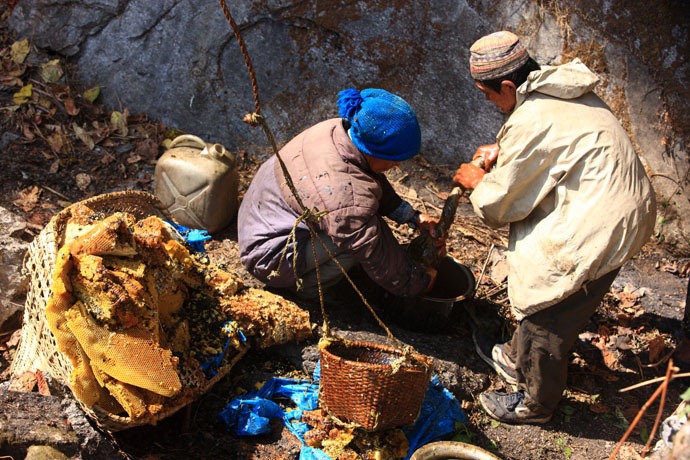Honey hunting is one of the many activities that form part of the ancient culture of numerous civilizations. Scientists have estimated through rock painting documentation that honey hunting was practiced as far back as 13,000 BC. In Nepal, honey hunting has been practiced for thousands of years and is a vital part of the Nepali culture.
Some villagers in Nepal depend on honey hunting for their livelihood, and the country is home to the Apis laboriosa, which is the biggest honeybee on the planet. These bees construct their hives on the cliffs of the country’s foothills, and watching the honey hunters at work is a sight to be seen. Due to the location of the bee hives, honey hunters make use of rope ladders and baskets to get to the combs after the bees have been flushed out with smoke by lighting a fire underneath the hives.
Honey harvesting usually takes place twice a year, when honey hunters get together and head into the Himalayas to take on this massive task. To harvest one colony takes the honey hunters two to three hours depending on the location of the hive and its size.
The harvest ritual, which varies slightly from community to community, begins with a prayer and sacrifice of flowers, fruits, and rice. Then a fire is lit at the base of the cliff to smoke the bees from their honeycombs. From above, a honey hunter descends the cliff harnessed to a ladder by ropes. As his mates secure the rope and ladder from the top and ferry tools up down as required, the honey hunter fights territorial bees as he cuts out chunks of honey from the comb.
There are a number of tour operators that offer visitors honey hunting tours, taking them to various locations to witness the entire harvesting procedure. The trekking routes to and from the honey bee hives are breathtaking, allowing visitors to take in the beauty and magnificence of the Nepali landscape and wildlife. The most popular honey hunting destinations are located in Bhujung, Nai Chi, Pasgaon, Naya Gaun, Ludhi and Dare. Tourists will be amazed at the speed and courage of the honey hunters, who hang from the cliffs to earn a living, and marvel at the ancient techniques that are still in use today.


Photos: Éric Tourneret and Eric Valli
Source: Nepal.com





































Awesome post and what a wonderful ritual !!
ReplyDeletewow. amazing.
ReplyDeleteI have witnessed this incredible feat at Chimkhola, a village in Myagdi District near Mt. Dhaulagiri.
ReplyDeletewow! Do you have photos or post?
Deleteawesome!!! but bees are in danger the world over because of pesticides.... i hope people here will ban the use of pesticides in their country......
ReplyDelete